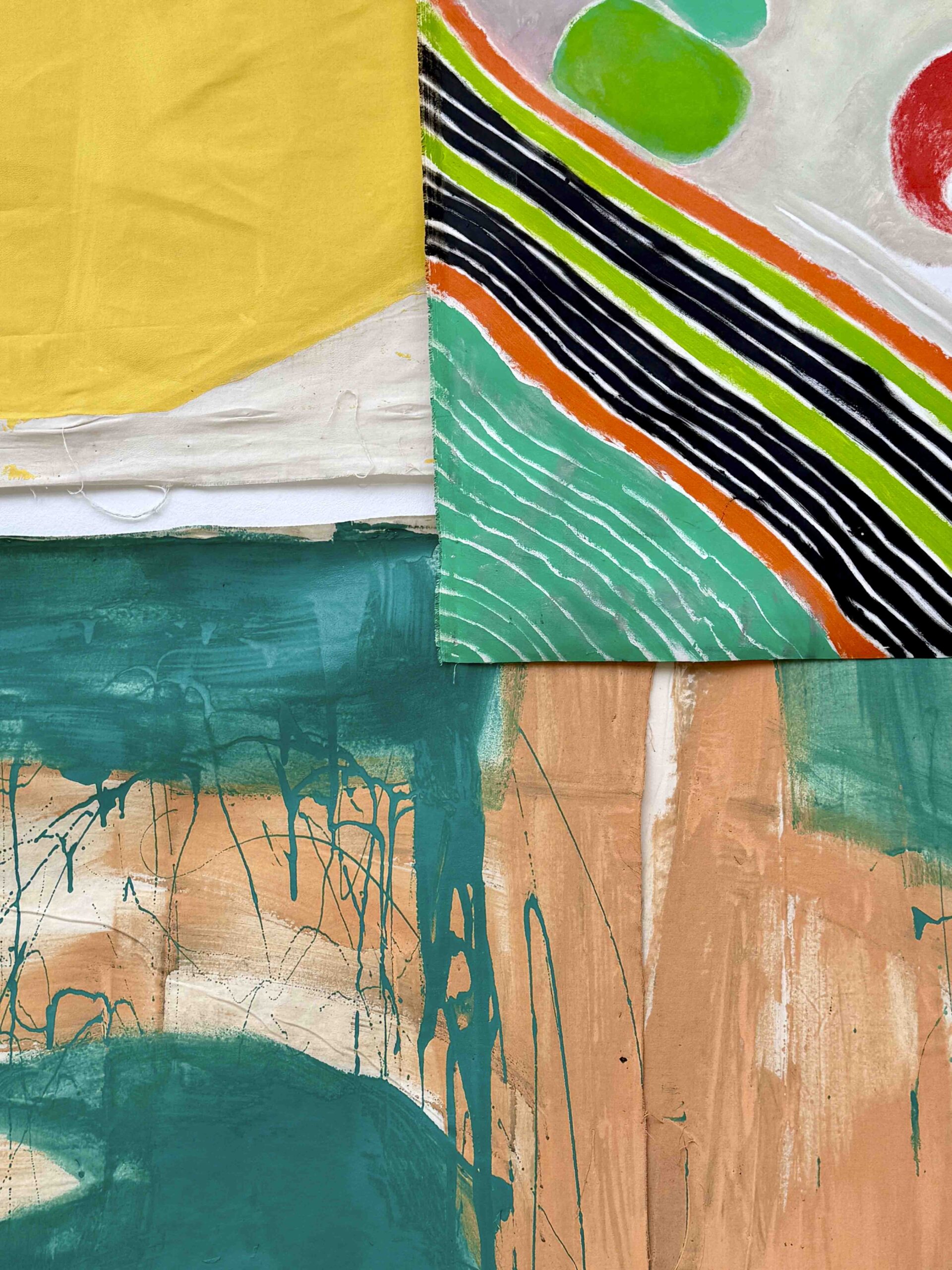Vivian Suter, Summer in Paris.
With a large part of the population of Paris being away, the summer is a great time to visit Paris and to soak up the wide range of cultural offerings. This week I visited a innovative exhibition at the Palais de Tokyo, as I was particularly intrigued by the challenges of presenting and hanging the unstretched canvases of Vivian Suter.
From now until the 7th September, the Palais de Tokyo is showing a comprehensive retrospective of work by Vivian Suter, with around 500 paintings produced by the artist over the course of the last ten years in her garden in Guatemala.
This “centre for contemporary creation” is dedicated to modern and contemporary art, located at no.13, avenue du Président-Wilson, in the 16th arrondissement of Paris.
The eastern wing of the building belongs to the City of Paris, and hosts the Musée d’Art Moderne de Paris (MMA). The western wing belongs to the French state and since 2002, it has hosted the Palais de Tokyo, the largest museum in France dedicated to temporary exhibitions of contemporary art.
The building is separated from the River Seine by an avenue, which was called Avenue de Tokyo from 1918 to 1945 (later renamed Avenue de New York) and the museum Palais de Tokyo, derives its name from the avenue of that time.
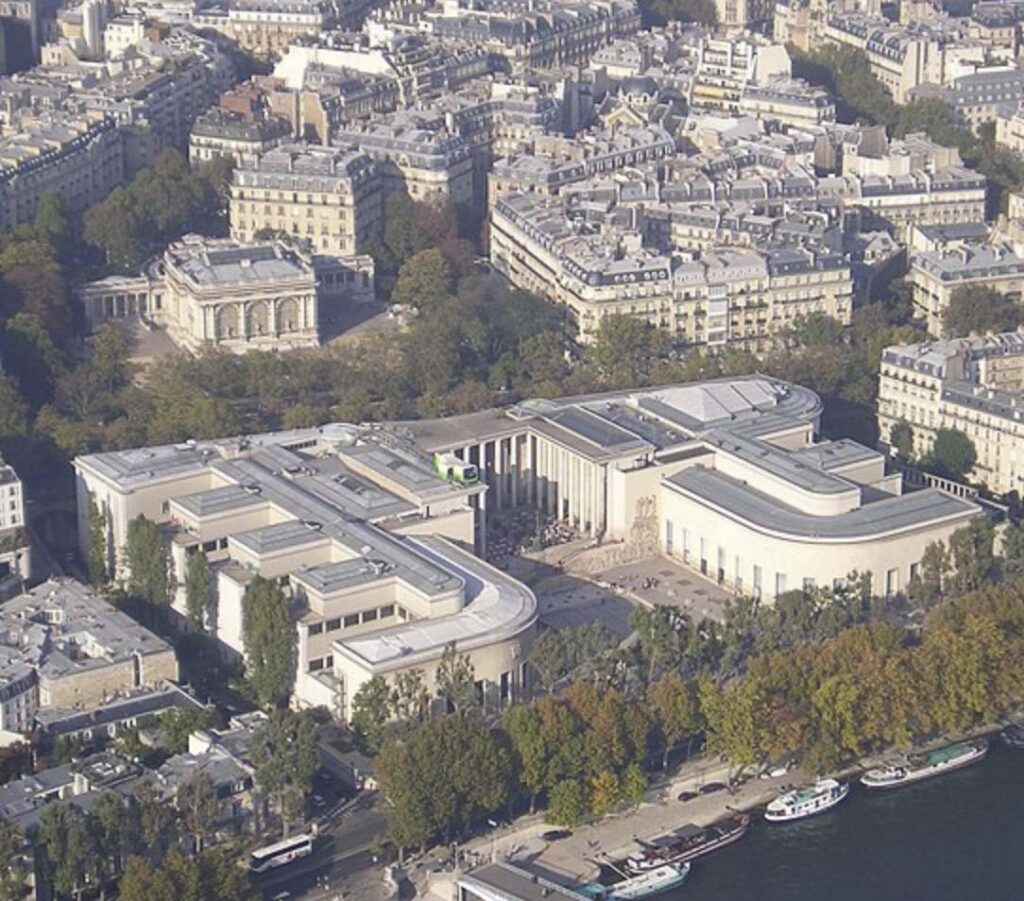
A Brief History of the Palais de Tokyo in Paris.
The monument was inaugurated by President Lebrun on 24 May 1937, at the time of the International Exposition of Art and Technology in Modern Life (1937).
Before the construction of the palais the area was occupied by industrial factories, which were demolished by the city of Paris to make way for the new exhibition buildings. The City of Paris agreed to guarantee the financing of the 1937 International Exhibition and in return, the State agreed to assume responsibility for the construction of the two modern art museums.
The leading architects of the time submitted detailed projects fro the buildings and the winning team of architects were Jean-Claude Dondel, André Aubert, Paul Viard and Marcel Dastugue. Their plans were selected from among one hundred and twenty-eight proposals.
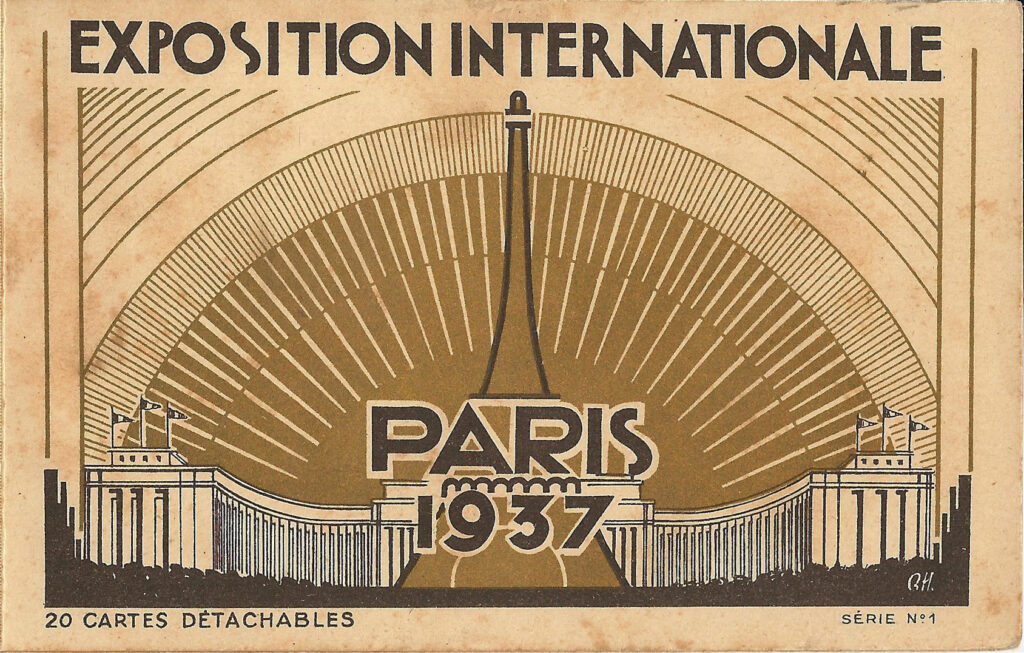
Art Deco Style for The Palais.
The building is rather somber and monumental, composed of two symmetrical wings linked together by a large peristyle, a continuous porch of columns around a building or a courtyard, which is perpendicular to the Seine, with a reflecting pool in the middle.
The Art Deco style, which appeared just before WW I, became the dominant style for major buildings between the two world wars. The primary building material of the new era was reinforced concrete. The structure of the buildings is dominated by horizontal lines, rows of bow windows and small balconies. Art Deco buildings often have classical features, such as rows of columns, but these were expressed in a stark modern form. Ornament was kept to a minimum and was often applied, as a carved stone plaque on the facade, rather than expressed in the architecture of the building itself.
The building’s high windows overlook the Seine and the Eiffel Tower to the south and the glass ceilings allow most rooms to be illuminated from above with natural light.
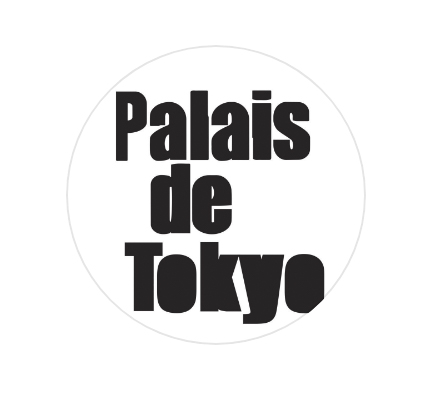
The Palais Tokyo in the 21st Century.
The current contemporary art centre opened to the public in March 2002, under the new name Site de création contemporaine, specialising in the emerging French and international art scene. With no permanent collection, the Palais de Tokyo is reputed to be the biggest non-collecting contemporary art museum in Europe.
Art in Paris, Summer 2025, Disco by Vivian Suter.
From 12/06/2025 to 07/09/2025 the Palais de Tokyo is showing a comprehensive retrospective of work by Vivian Suter, with around 500 paintings produced by the artist over the course of the last ten years in her garden located in Panajachel, Guatemala, where she has lived since the 1980s.

Vivian Suter was born in Buenos Aires in 1949 to exiled European parents. Her father owned a textile printing plant, while her mother, Elisabeth Wild, was an artist. When she was 12, during the Perón regime, her family relocated from Argentina to Basel, Switzerland, where Vivian studied painting. In 1982 she travelled through the USA and Latin America, and the following year, she settled in Panajachel, Guatemala. Her local environment, its atmosphere, climate, vegetation, and animals have become central concerns in her work.
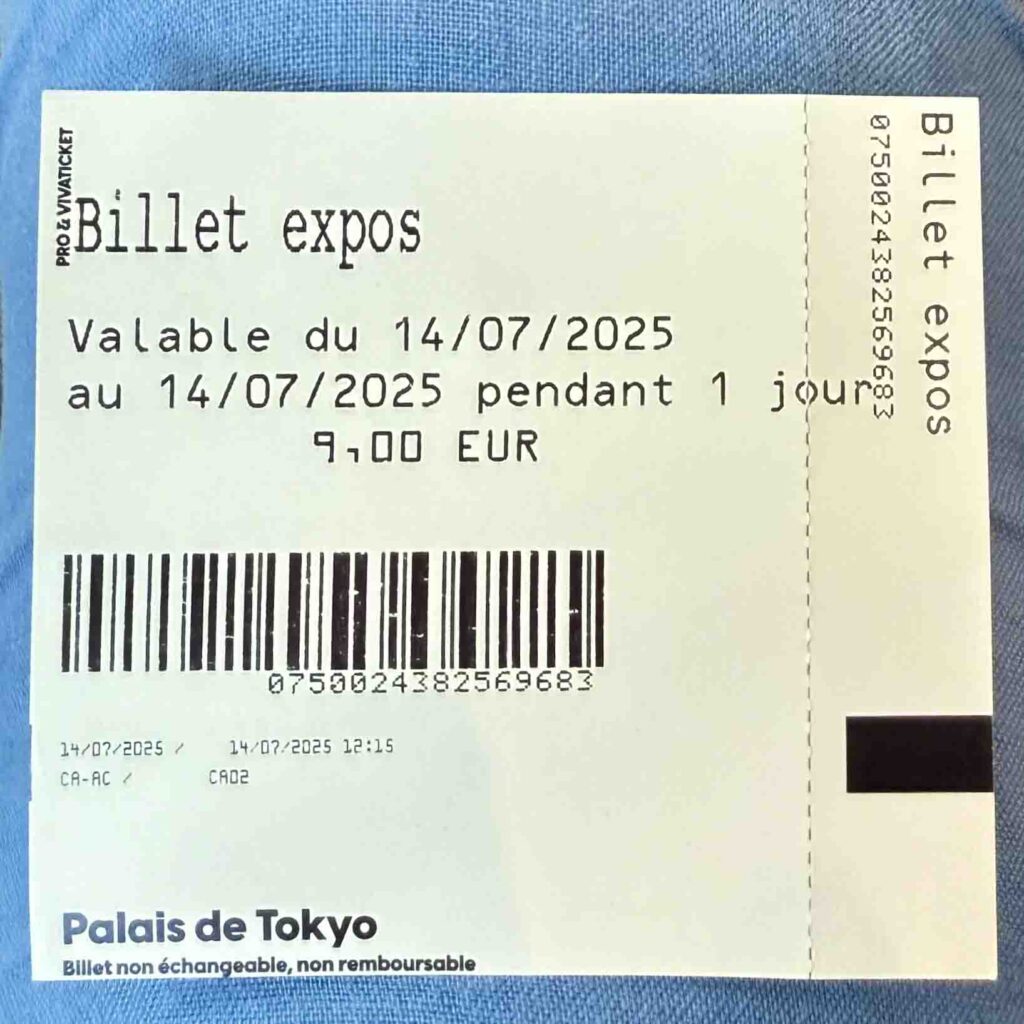
Immersed in this tropical environment, Vivian Suter’s gestural and colorful painting has gradually become a documentation of her surroundings. Her daily production captures not only the artist’s gestures, but also traces of the surrounding flora and fauna, as well as the effects of the weather. In this way Suter expresses her acceptance of the climatic conditions that shape our lives and the impermanence of art.
Vivian’s works are untitled and undated, but numbered and are displayed within expansive installations creating a pictorial jungle where unframed canvases may overlap, be piled in stacks or float in the wind. Often exhibited in public spaces, this collection at the Palais de Tokyo under its skylit gallery mimics a setting more akin to the street, than to the protected space of a museum.
Below three photos of the entrance to the exhibit and three of my favourite, dare I say trade mark, out of focus photos …..
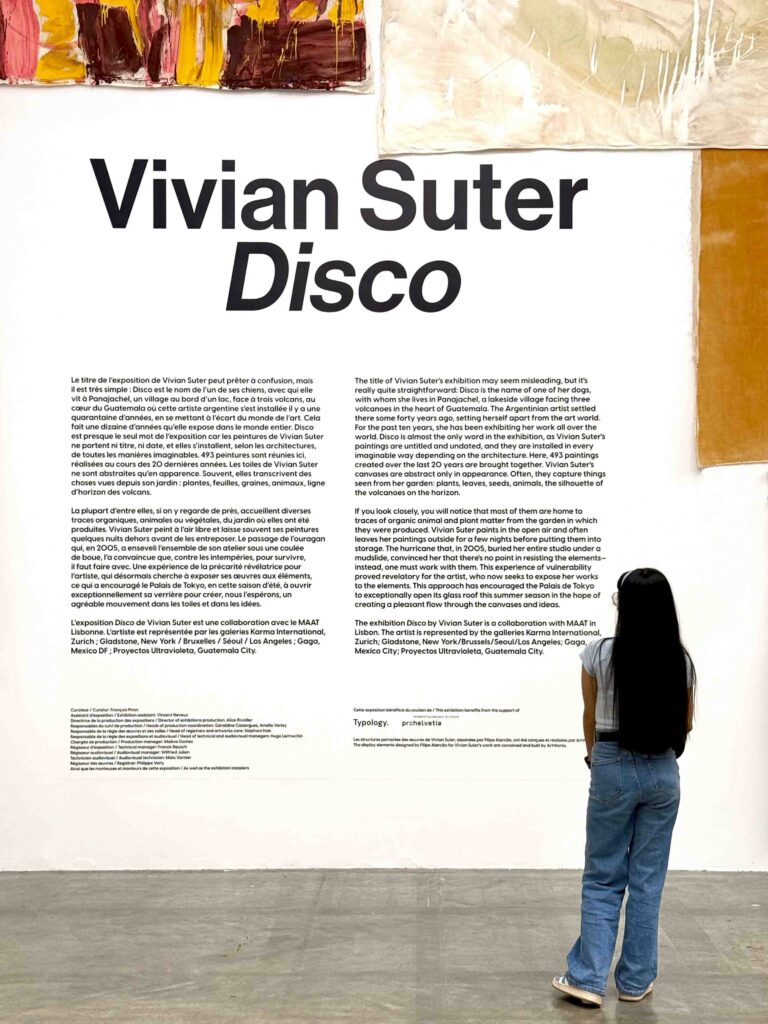
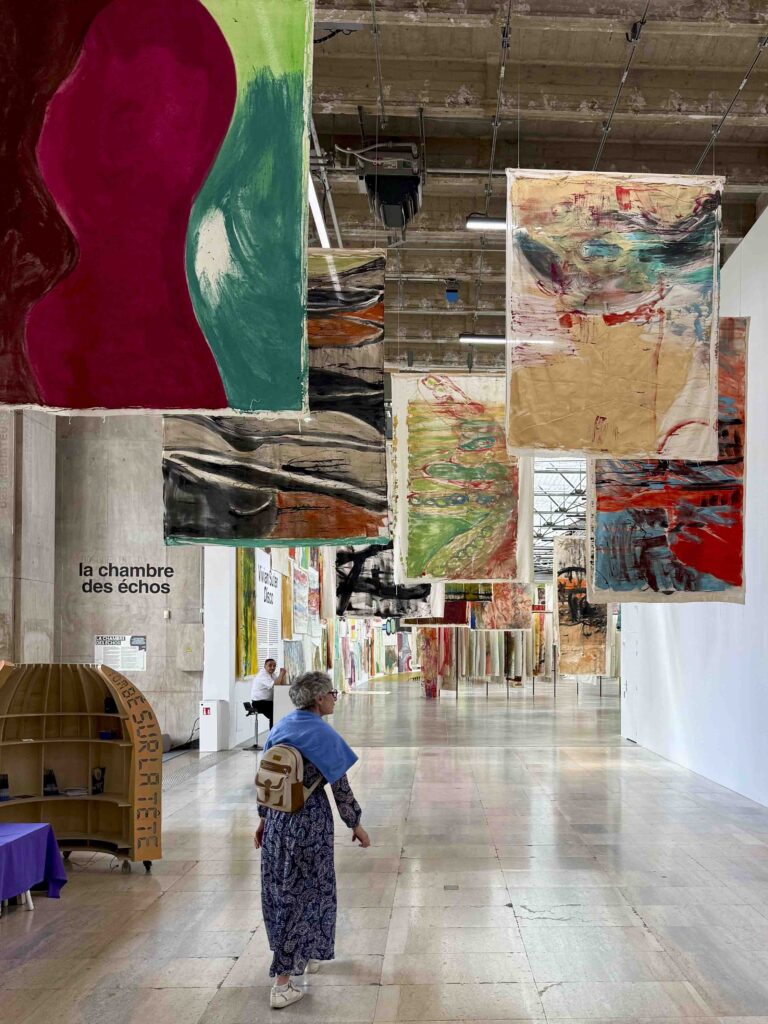
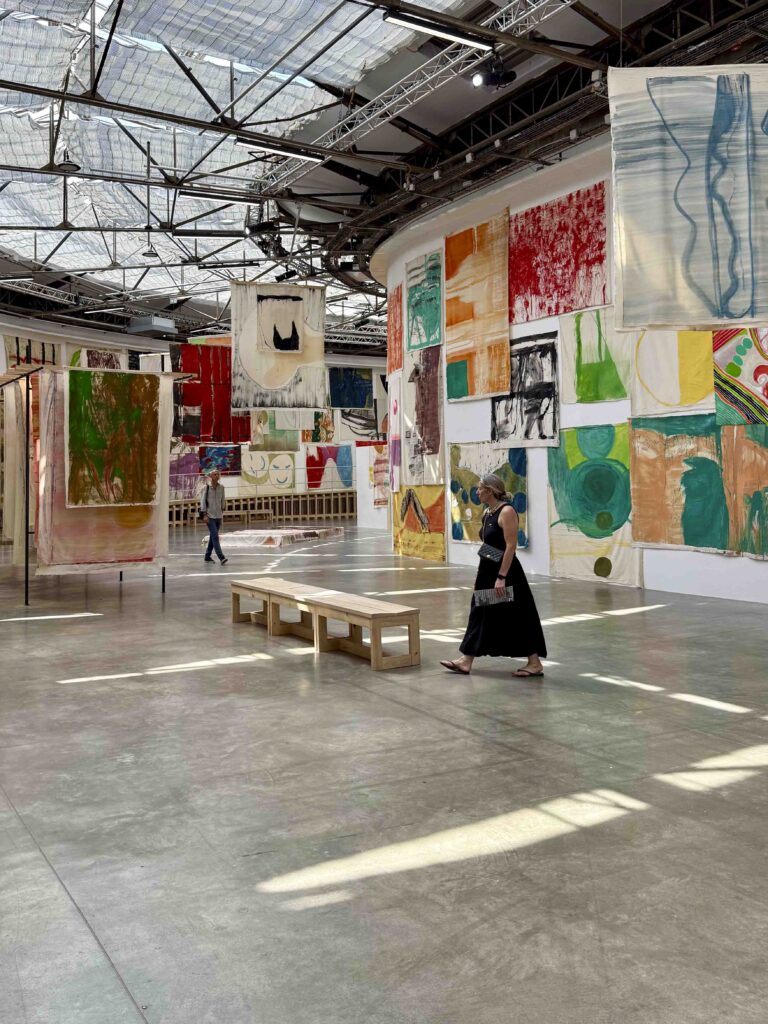
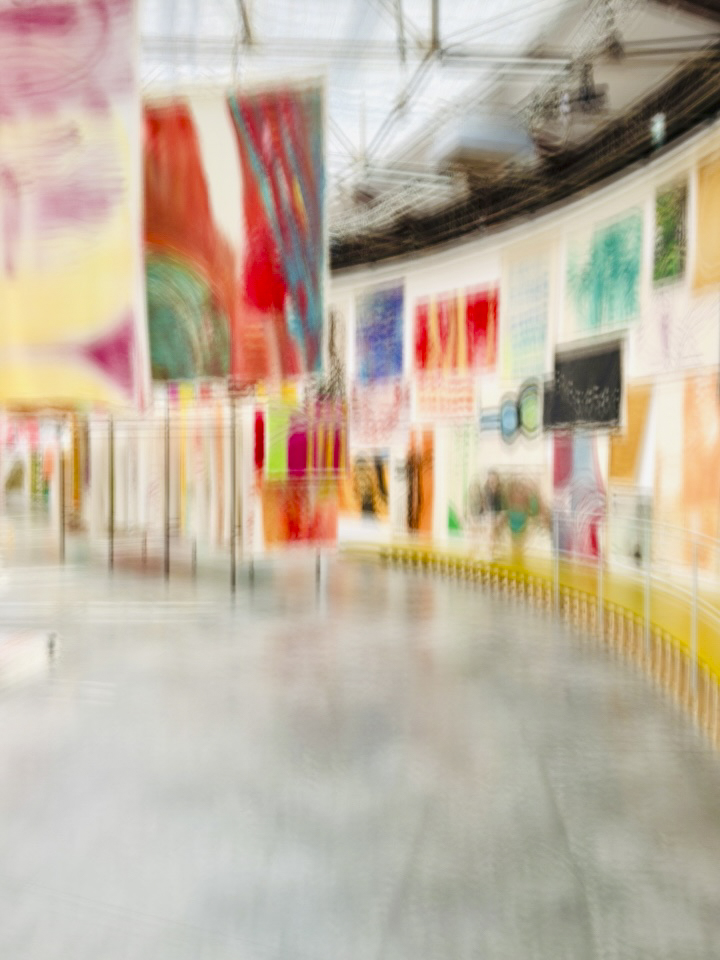
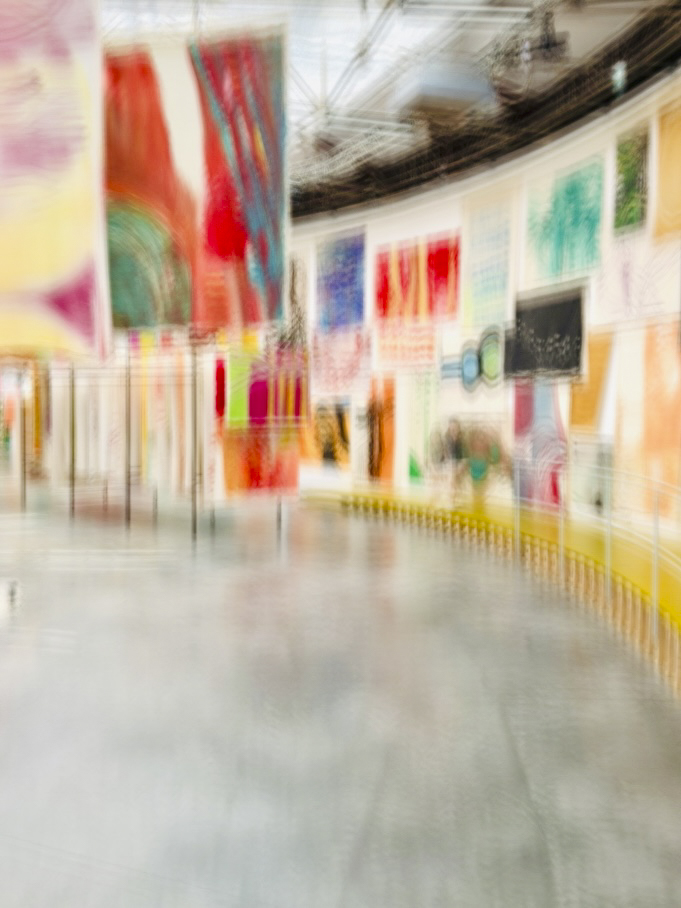
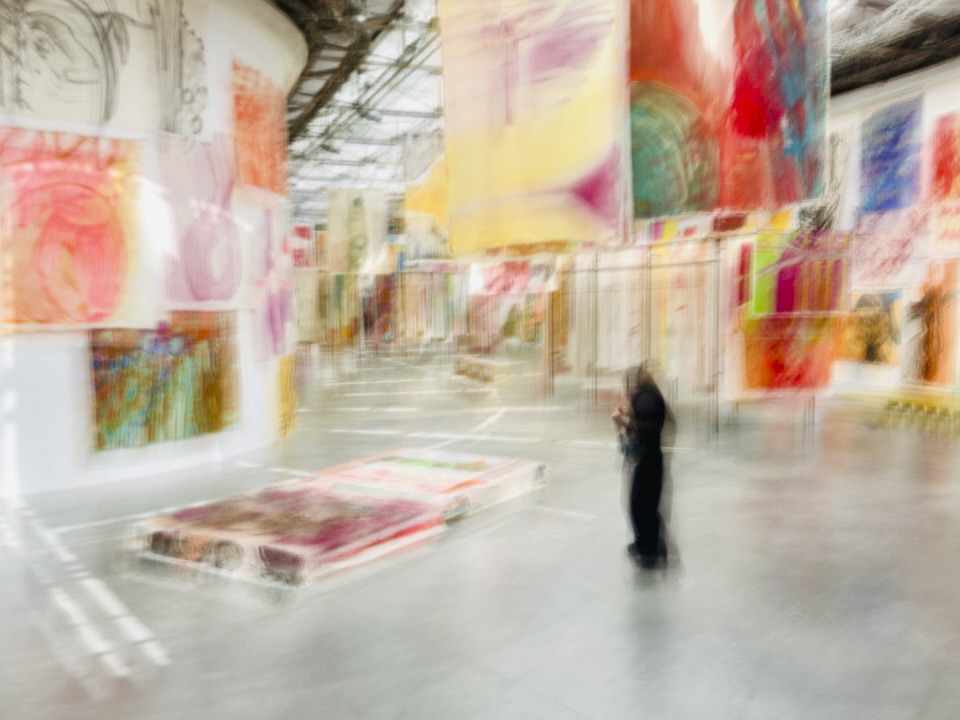
And a video that I shot at the exhibition ….
Coming Soon On This Blog ….
Another article about the collage work of Elisabeth Wild (Vivian Suter’s mother) and an installation by John Giorno, also on show at the Palais de Tokyo this summer.
